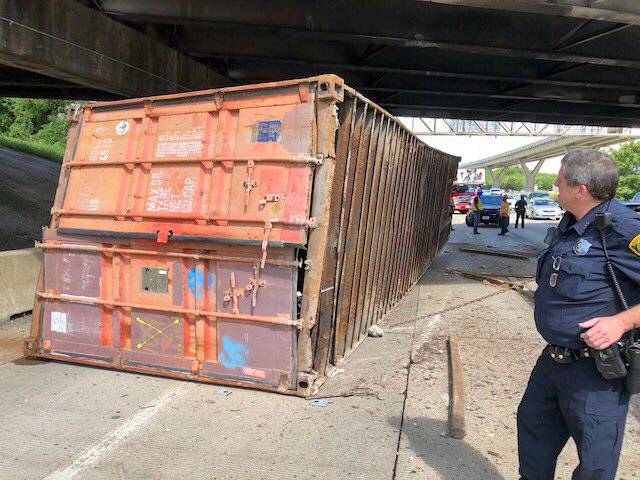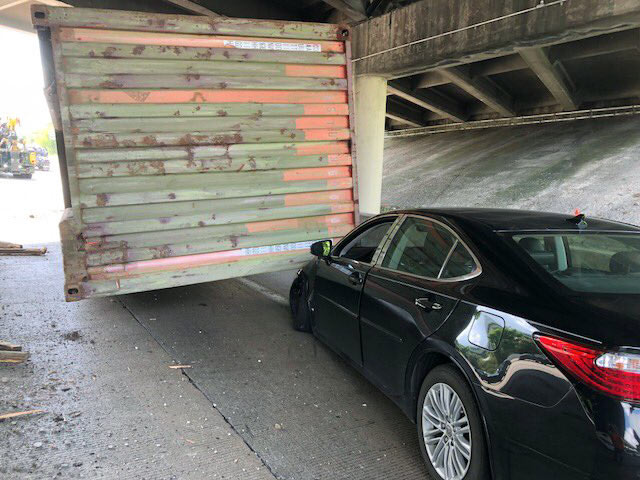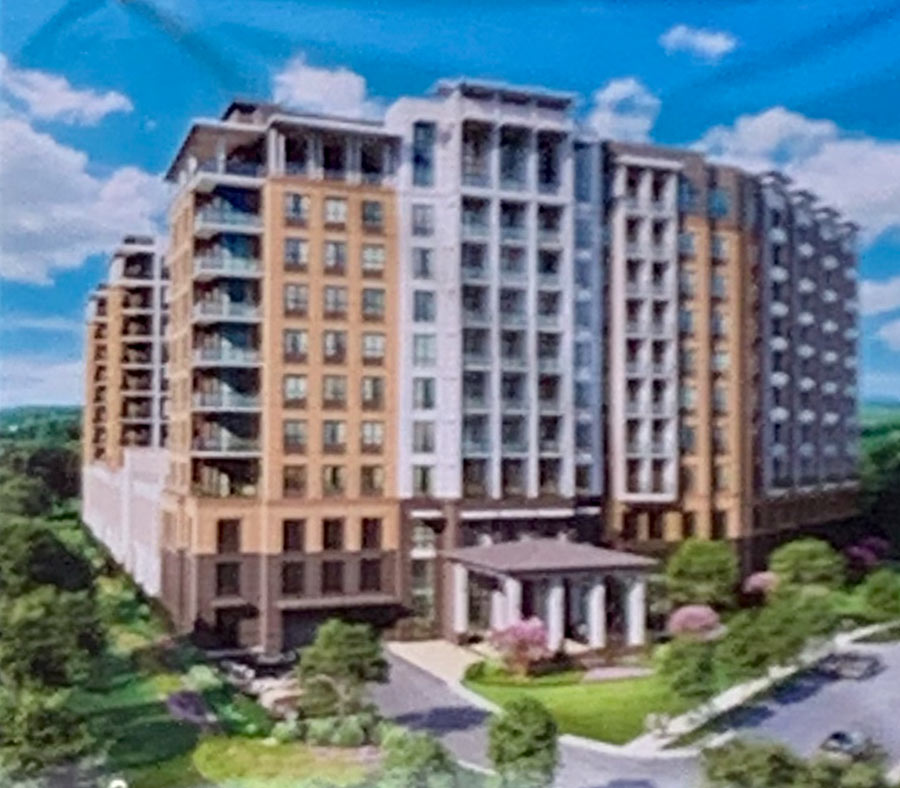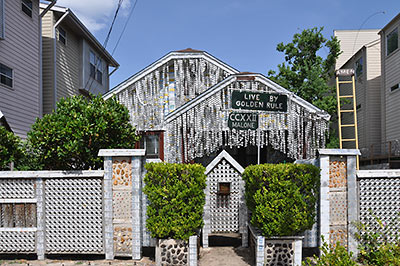

The latest 18-wheeler to drive into the Houston Ave. bridge didn’t make enough of an impact to force repairs yesterday, although it did stall I-10 traffic all the way to T.C. Jester while TxDOT closed 2 lanes to clear the debris (including the truckload pictured above pinning a sedan) and inspect the overpass to ensure its integrity. (The last round of bridge maintenance in March — to repair a strike in December — couldn’t have come at a better time: “Just as crews were putting barriers in place,” for an overnight closure to fix the damaged structure, another truck drove into it — reported Houston Public Media’s Gail Delaughter.)
Over the last 4 years, the 14-ft.-3-in.-high bridge has been hit 22 times — reports Click2Houston; historically, it’s struck “more than any other bridge in the Houston area,” says a TxDOT spokesperson. Not a great track record — until you factor in how many trucks aren’t hitting it as a result of TxDOT’s high-tech warning system. In 2015, the agency installed infrared sensors at Mercury Dr. and Wirt Road that detect oversized vehicles and — if spotted — flash a warning message to get off the road on an electronic billboard. Between January and June 2 of this year alone, the sensors transmitted 13,477 warnings.
- TxDOT using ‘size detectors’ to limit bridge strikes [KHOU]
- Grappling with a pair of Houston bridges that keep getting hit [Click2Houston]
- Bridge Due For Repairs Is Hit Again By A Truck, TxDOT Moves Ahead With I-10 Closure [Houston Public Media]
Photos: Emily Black





This is what happens when truck drivers are too stupid to read the clearance signs
Hook up a second, last-chance line of infrared sensors to tire deflation spikes like rental car lots have. Even if the city has to pay out some lawsuits over it, surely it’s still cheaper (and more just!) than constant bridge repair.
(A lawyer would say this is a better thought experiment than actual suggestion. But lawyers aren’t always right.)
Take the drivers license away for 1 year and fine both the company and driver lots of $$$. Shipping companies are just as responsible as the drivers they hire. If they have already put drivers through awareness programs and drivers disobey approved driving routes then they need another occupation.
WR,
It’s a little more complicated than that. Since there’s an upslope right after the underpass, the clearance height isn’t a constant: it’s a function of length, as well. A smaller panel truck may have a different clearance height than a long tractor-trailer, for example.
Just build a new bridge. In the long run we’ll save money on repairs, less traffic tie ups and you won’t have to worry about inadequate drivers.
Seems lowering the road would cost less than a new bridge, yes, no?
@Angostura , I understand the math you point out, but most times it is the leading beam that gets whacked. What you suggest is damage to the central beams. When I was overseas they had beams installed about 100 yards before the overhead clearance and that took took the damage, but much less expensive to repair.
Do we even pay for it? Wouldn’t the trucking company’s insurance be paying for the repairs?
The sign mentioned in the posting is a joke – it’s small, off to the side, partially obscured, and it is not readily apparent what it’s referring to. Worse than that, it is 2 miles ahead of the 610 interchange, and 7 miles ahead of the Houston Ave overpass.
.
It is nowhere close to a sufficient or effective system, and along with the new low clearance signs inside the loop, has every appearance of a band-aid solution to something that needs a more comprehensive approach.
@WR, they must be focused on that great “Be Someone” illegal paint job to focus on the road….